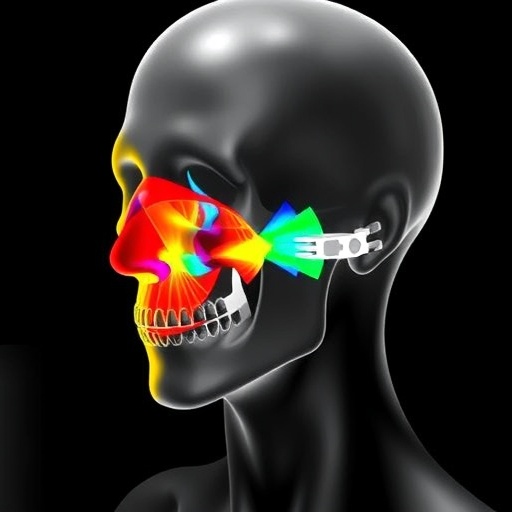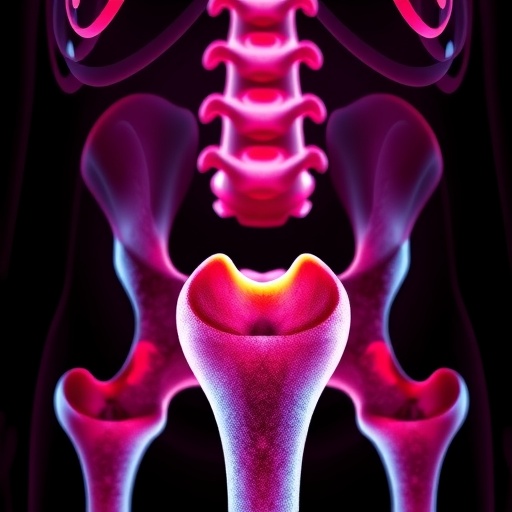In a groundbreaking study poised to reshape the surgical landscape for congenital nasal pyriform aperture stenosis, researchers have developed an innovative automated three-dimensional computed tomography analysis. This advancement, spearheaded by authors T. Yeshua, Y. Ben-Haim, Y. Schwarz, and others, promises to enhance decision-making capabilities during critical interventions. As the medical field continues to evolve with technology, the introduction of this system may serve as a transformative approach, ultimately improving patient outcomes.
Congenital nasal pyriform aperture stenosis is a rare developmental anomaly characterized by narrowing at the base of the nasal cavity, predominantly affecting children. This condition can result in significant respiratory issues and complications if not properly addressed. Surgical intervention is typically required for affected patients; however, traditional methods for determining the extent of surgical measures have often lacked precision. This situation has created an urgent need for better tools in guiding surgical decisions.
At the heart of this innovation is the integration of advanced imaging techniques with artificial intelligence (AI) algorithms. The automated three-dimensional computed tomography (CT) analysis receives input from CT scans, processing vast amounts of data to generate precise models of the anatomical structures involved. This capability allows surgeons to visualize the nasal cavity and pyriform aperture in comprehensive detail, assisting in pre-operative strategy formulation.
.adsslot_p5N69YgBHV{ width:728px !important; height:90px !important; }
@media (max-width:1199px) { .adsslot_p5N69YgBHV{ width:468px !important; height:60px !important; } }
@media (max-width:767px) { .adsslot_p5N69YgBHV{ width:320px !important; height:50px !important; } }
ADVERTISEMENT
The process begins with the collection of high-resolution CT scans. These images undergo a meticulous analysis, wherein the AI dissects and reconstructs them into three-dimensional representations of the patient’s anatomy. The precision of this automated approach significantly surpasses traditional methods, providing more accurate assessments of the stenosis. It allows for a clearer interpretation of the anatomy, crucial for delineating the degree of obstruction.
One of the key contributions of this study lies in its emphasis on enhancing the surgical decision-making process. By using an automated system, surgeons can now rely on data-driven insights rather than subjective interpretations. The robustness of the AI model ensures that elements such as anatomical variations and complexities are appropriately mapped out, reducing the risk of unforeseen complications during surgery.
Furthermore, this technology heralds a shift toward personalized medicine. Each individual presents unique challenges and anatomical nuances, and the automated 3D analysis acutely recognizes these differences. By tailoring surgical plans based on this refined data, surgeons enhance the likelihood of favorable outcomes and minimize variations in post-operative recovery experiences.
The impact of this innovative approach extends beyond immediate surgical interventions. Improved pre-operative assessments can pave the way for reduced operating times and better resource allocation within surgical suites, translating to increased accessibility for patients in need. As healthcare systems worldwide grapple with the burden of surgical demand, optimization through tools such as this one is imperative.
This study also positions itself as a catalyst for further technological integration within pediatric surgery. The reliance on AI-driven tools may encourage a broader acceptance of digital solutions in surgical planning. By demonstrating the efficacy of automated analysis, the research sets a precedent for the incorporation of similar innovations across various surgical disciplines.
As attention turns to the potential implications of this technology, the research team highlights that rigorous validation is crucial. While preliminary results show significant promise, ongoing studies will determine the long-term applicability and effectiveness in diverse clinical settings. This progressive mindset underlines the necessity for continuous evolution within surgical practices, ensuring that advancements continue to benefit patient care.
In an environment where patient safety remains paramount, the adoption of automated tools such as the three-dimensional CT analysis could represent a significant leap forward. With enhanced accuracy in anatomical mapping and surgical planning, the likelihood of achieving optimal results is drastically improved. This advancement encourages a cultural shift toward embracing technology’s role in medicine, ultimately leading to improved standards of care.
Colleagues within the medical community are beginning to take notice of these developments, advocating for the integration of similar diagnostic systems in training programs. Teaching future surgeons about the nuances of this technology can enable a generation of medical professionals adept in leveraging advanced imaging for improved patient management. Embracing this evolution is essential to enhancing the quality of care provided to children facing congenital challenges.
With July 2025 marking the publication of this pivotal research, the focus remains on widespread implementation and ongoing refinement of the automated three-dimensional CT analysis system. As more practitioners embrace this technology, it may become a staple of surgical practice in the management of congenital nasal pyriform aperture stenosis and beyond.
In conclusion, the study conducted by Yeshua and colleagues stands at the intersection of medicine and technology, offering a glimpse into the future of surgical planning. Through an automated approach to three-dimensional analysis, we are witnessing a significant evolution in the way surgical decisions are made for complex congenital conditions. This innovative research not only has the potential to revolutionize pediatric surgery but also embodies a proactive approach to integrating technology into broader medical practices, thereby enhancing patient outcomes across the board.
Subject of Research: Automated three-dimensional computed tomography analysis for congenital nasal pyriform aperture stenosis.
Article Title: Automated three-dimensional computed tomography analysis for surgical decisions in congenital nasal pyriform aperture stenosis.
Article References: Yeshua, T., Ben-Haim, Y., Schwarz, Y. et al. Automated three-dimensional computed tomography analysis for surgical decisions in congenital nasal pyriform aperture stenosis. Pediatr Radiol 55, 1702–1712 (2025). https://doi.org/10.1007/s00247-025-06282-7
Image Credits: AI Generated
DOI: July 2025
Keywords: Congenital nasal pyriform aperture stenosis, automated three-dimensional analysis, surgical decision-making, pediatric surgery, artificial intelligence.
Tags: 3D CT analysis for nasal surgeryadvanced imaging in healthcareanatomical modeling for surgeryartificial intelligence in medical imagingautomated imaging techniques in surgerycongenital nasal pyriform aperture stenosisenhancing patient outcomes in surgeryinnovative approaches in nasal surgerypediatric respiratory issuesprecision in surgical interventionssurgical decision-making toolstransformative medical technology





